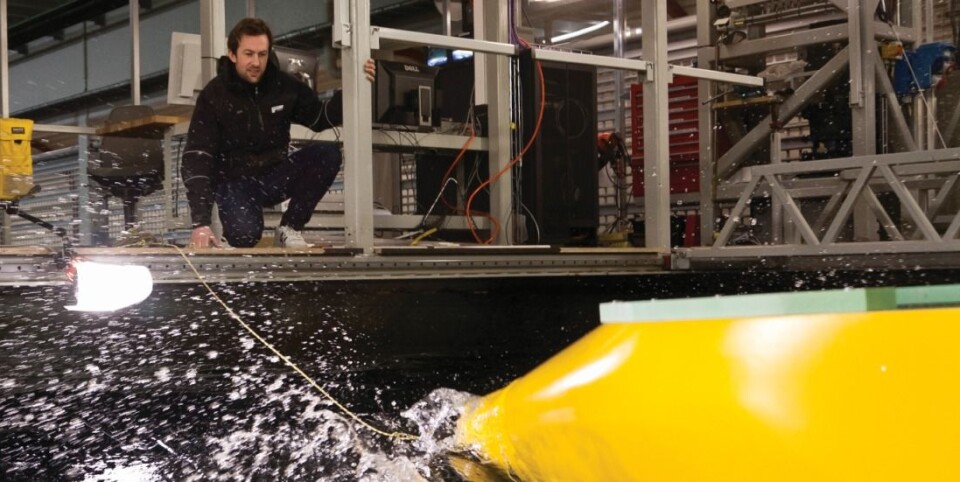This article is produced and financed by SINTEF - read more

How to make shipping environmentally friendly
We need to cut both global and local emissions from shipping. The picture is complex, but research is showing that there are many ways to meet this goal.
Shipping is the most efficient way of moving goods around the world, in terms of energy consumption per unit transported, but there is still a great deal to be gained by making shipping more environmentally friendly.
Emissions from international shipping come to around 1.2 billion tonnes of CO2 a year, which is equal to 2 – 3 per cent of total global emissions. If measures are not taken, these emissions will rise, probably by 50 – 250 per cent in the course of the next 30 years, according to the International Maritime Organization (IMO).
The UN’s shipping industry agency intends to reverse this trend. It aims to halve emissions by 2050 and then to continue working towards zero emissions as rapidly as possible.
“Climate targets differ, depending on whom you ask, but the fact that it is the IMO that is setting such ambitious goals is a positive sign, because it is in a position to have a global effect. Whatever it decides applies to every country in the world,” says SINTEF Ocean research manager Anders Valland.
It is easy to forget local emissions, which of course it is incredibly important to do someting about. Here, the distance to consumers is often shorter. The incentives for ferries and cruise ships to operate in an environmentally friendly way, for example, is greater.
Drastic measures needed NOW!
“Given that ships are in service for 20 – 30 years, drastic measures will have to be put in place now if we are to meet the IMO’s goals by 2050, but the picture is complex,” says Valland.
“One major challenge is that the competitivity of shipping companies is based more on finance than the climate. It costs a lot to prioritise environmental measures when new vessels are being built, while other companies may be holding out until the cost of newbuildings falls. The market is extremely competitive, and it is by no means obvious that going in for climate-friendly technology will give you an advantage. The incentives are quite simply not great enough,” says the SINTEF scientist.
Moreover, since the consumers of sea-borne products are relatively distant in market terms from the actors in the freight sector, they have only a limited ability to influence this situation.
“The shipping companies are dependent on a value being placed on how they act. Unfortunately, it doesn’t help much today to operate extremely low-emission vessels if this raises costs by 10 per cent.”
In practice, total emissions will have to be reduced by 75 per cent
In 2016, SINTEF Ocean launched the Smart Maritime Centre for Research-based Innovation (SFI), a major research project that is looking at what needs to be done to make vessels more energy-efficient, and to reduce pollutiion, while simultaneously making the Norwegian shipping sector more competitive.
“Since 1970, we have managed to improve energy efficiency by 1.5 per cent every year, but during the same period, the transport sector has grown by an annual 2 – 3 per cent. So in spite of the progress we have made, total fuel consumption has actually increased. This means that if we are to reach our goal of halving emissions by 2050, every single vessel in the fleet will have to reduce its emissions by almost 75 per cent,” says project manager Valland.
This is also reflected in the IMO’s ambition to reduce CO2 emissions from transport (i.e. emissions per tonne-nautical mile carried) by at least 40 per cent by 2040 and 70 per cent by 2050.
“If we are to do this, we cannot simply concentrate all our efforts on fuel consumption. We must take a wider view, by looking at ships as one component of the transportation system. That will enable us to address the problem by examining how we can reduce the overall energy consumption of the transport system. Our point of departure is that we can cut fuel consumption by 25 per cent and also make a difference by improving hull designs to make them 25 per cent more efficient, and that it is possible to improve the efficiency of vessel operation by 25 per cent. In practice, the relative savings made by each of these measures may well turn out to be somewhat different once we have studied the problem in more detail. For example, we could look at how we can reduce the time that ships spend in port, or at how to optimise the load capacity of individual vessels,” says Valland.
The research project is currently performing case studies based on these three areas.
The largest vessels are responsible for most emissions
“It is obvious that the most important way towards achieving IMO’s aims will be to look at solutions for the largest vessels. In terms of numbers, they make up ony one third of the global merchant fleet, but they are responsible for as much as 80 per cent of its fuel consumption,” points out Valland.
At the same time, he is keen to emphasise the importance of not only focusing on greenhouse gas emissions.
“It is easy to forget local emissions, which of course it is incredibly important to do someting about. Here, the distance to consumers is often shorter. The incentives for ferries and cruise ships to operate in an environmentally friendly way, for example, is greater.”
SINTEF Ocean is running a number of research studies of solutions aimed at the Norwegian shipping fleet, which for the most part consists of medium-sized vessels.
“We have a number of projects that are studying how batteries and hydrogen can be used to reduce fuel consumption. This will be of great importance at local level, but at the moment it is largely a Norwegian phenomenon,” finishes Valland.


































